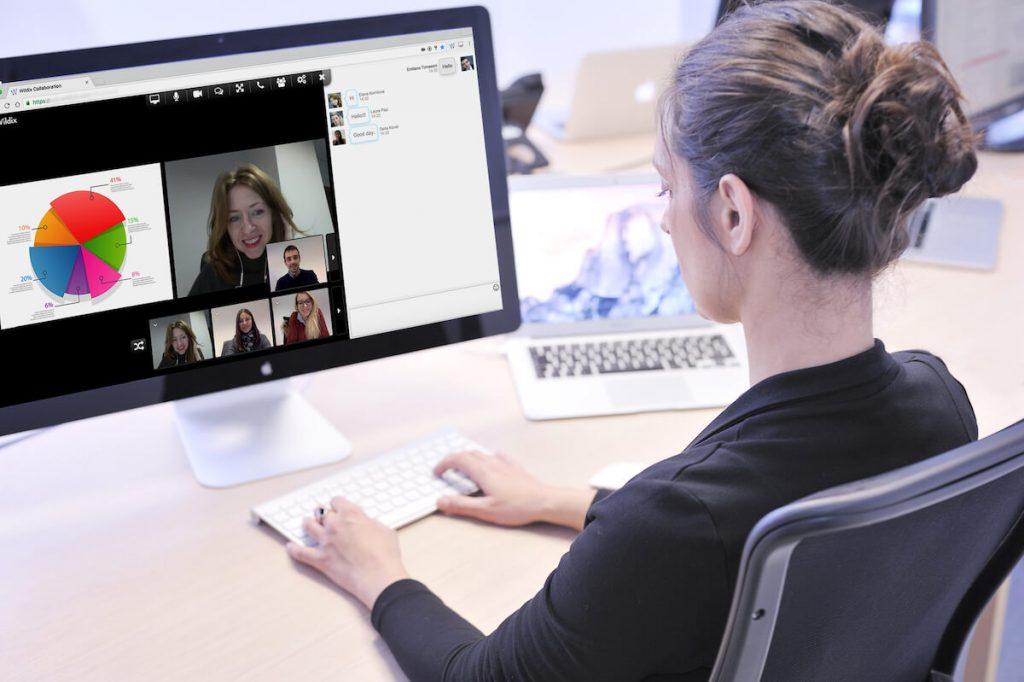The human species is more connected now than ever before in our history. Digital connectivity means our banking, home management, office, car keys and even biological data are accessed, distributed and stored in an online environment. For companies, this means that our desks aren’t traditional desks; workers are no longer confined to an office space and meetings don’t have to be around boardrooms.
In the US alone, 4.7 million people work remotely at least some of the time. Globally, 16% of companies are fully remote. This rise in remote work — expedited due to the pandemic — has hurried along a shift in communications technology. Technology now has to be both a functional tool and also provide means for communication — with other technology, with customers, with employees or some combination of those things.
Over the last few years, there’s been an avalanche of tech. Enter “Unified Communications,” an easier way to make sense of all the new technology coming into the IT space.
What is Unified Communications
Unified Communications (or UC) is a term that encompasses communications systems and collaboration tools within a digital and physical workforce. UC is also sometimes referred to as UC&C or Unified Communications and Collaboration, but really, the two acronyms mean the same.
At a base level, UC includes:
- Messaging
- Voice and video calling
- Team collaboration
- Video conferencing
- File sharing
- Access portals
- And more!
Understanding the Pieces of Unified Communication
VoIP
Voice Over Internet Protocol (VoIP) is something we’re passionate about here at ATS. It’s how our clients are making calls over the internet with increased efficiency and at lower costs than “Plain Old Telephones” (POTs). For many UC systems, VoIP serves as the backbone of the infrastructure. VoIP saves clients money and from the headaches of up-front costs associated with fixed-line services. Plus, clients get increased mobility — perfect for companies trying to go “deskless” in their remote offices.
Video Conferencing
Video conferencing tools like Zoom and Skype have been on the scene for roughly a decade now. However, the evolution of remote work means remote conferencing tools have needed to become more robust and secure. They’re no longer the rarity; they’re the expectation.
Messaging
Not everything needs to be a video conference or formal email. For most offices, instant messaging (IM) keeps teams in quick communication with each other. Agility is key in an increasingly digital world, and people need information faster than ever. The ability to quickly shoot someone a message is an often understated part of UC; however, teams are definitely aware of inefficient (or worse, nonexistent) IM services.
Typically, IM services include some of the following features:
- Integrating with mobile and web apps
- File sharing
- Seeing who is online (presence features)
Team Apps
Collaboration has moved from conference rooms into virtual spaces. Collaborating on projects now means meeting a specific set of goals and meeting timelines rather than getting together in a room and not leaving until the time runs out. With the conference room disappearing, collaboration tools and team apps have made tracking projects easier than ever before. Team managers can also streamline documenting and reporting progress.
Combining them all together
Could you find individual services for these UC pieces and build up your unified communications group that way? Yes… but we always remind our clients that not every service “plays nicely” with others. (Just look at the kerfuffle between Apple and Facebook for further proof.) But by using a platform like Wildix that integrates all of these needs under one roof, you’re able to guarantee that messages don’t get lost between platforms — keeping everyone on the same page, productivity improves, and customers are heard.

